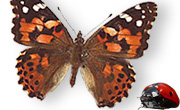Fax: (916) 381-4006



Live Algae Specimens |
 Algae (singular alga) encompass several different groups of living organisms that capture light energy through photosynthesis, converting inorganic substances into simple sugars using the captured energy. Algae have been traditionally regarded as simple plants, and indeed some are closely related to the higher plants. Others appear to represent different protist groups, alongside other organisms that are traditionally considered more animal-like (that is, protozoa). Thus algae do not represent a single evolutionary direction or line, but a level of organization that may have developed several times in the early history of life on earth. Algae (singular alga) encompass several different groups of living organisms that capture light energy through photosynthesis, converting inorganic substances into simple sugars using the captured energy. Algae have been traditionally regarded as simple plants, and indeed some are closely related to the higher plants. Others appear to represent different protist groups, alongside other organisms that are traditionally considered more animal-like (that is, protozoa). Thus algae do not represent a single evolutionary direction or line, but a level of organization that may have developed several times in the early history of life on earth.
Algae range from single-celled organisms to multi-cellular organisms, some with fairly complex differentiated form and (if marine) called seaweeds. All lack leaves, roots, flowers, and other organ structures that characterize higher plants. They are distinguished from other protozoa in that they are photoautotrophic, although this is not a hard and fast distinction as some groups contain members that are mixotrophic, deriving energy both from photosynthesis and uptake of organic carbon either by osmotrophy, myzotrophy, or phagotrophy. Some unicellular species rely entirely on external energy sources and have reduced or lost their photosynthetic apparatus. All algae have photosynthetic machinery ultimately derived from the cyanobacteria, and so produce oxygen as a by-product of photosynthesis, unlike non-cyanobacterial photosynthetic bacteria. It is estimated that algae produce about 73 to 87 percent of the net global production of oxygen--which is available to humans and other terrestrial animals for respiration. Algae are usually found in damp places or bodies of water and thus are common in terrestrial as well as aquatic environments. However, terrestrial algae are usually rather inconspicuous and far more common in moist, tropical regions than dry ones, because algae lack vascular tissues and other adaptions to live on land. Algae can endure dryness and other conditions in symbiosis with a fungus as lichen. The various sorts of algae play significant roles in aquatic ecology. Microscopic forms that live suspended in the water column — called phytoplankton — provide the food base for most marine food chains. In very high densities (so-called algal blooms) these algae may discolor the water and outcompete or poison other life forms. Seaweeds grow mostly in shallow marine waters. Some are used as human food or harvested for useful substances such as agar or fertilizer. The study of algae is called phycology or algology |
| Featured Items |
|---|
| Desmids - Class 120 |

Desmids are the Desmidiales class of green algae, comprise around 40 genera and more than 10000 species, fo... |
|
Read more »»»
$32.80 (Buy Now) |
|---|
| Mixed Algae - Class 120 |
|
Read more »»»
$48.00 (Buy Now) |
|---|
| Oscillatoria - Class 12 |
 Oscillatoria is a genus of filamentous bacteria which is named for the oscillation in its' movement (cyanobact...
Oscillatoria is a genus of filamentous bacteria which is named for the oscillation in its' movement (cyanobact... |
|
Read more »»»
$7.50 (Buy Now) |
|---|
| Spirogyra - Class 120 |

Spirogyra is a genus of filamentous green alga of the order Zygnematales. It is commonly found in freshwate... |
|
Read more »»»
$32.80 (Buy Now) |
|---|
9298 Elder Creek Road
Sacramento, CA 95829
(916) 386-2665
9298 Elder Creek Road
Sacramento, CA 95829
(916) 386-2665